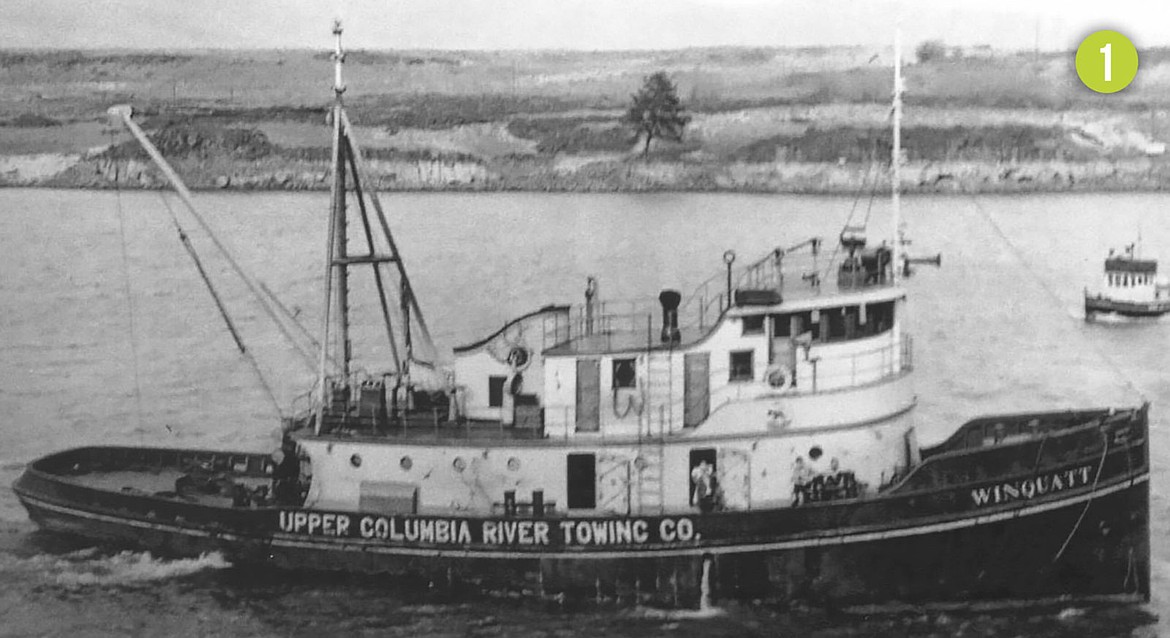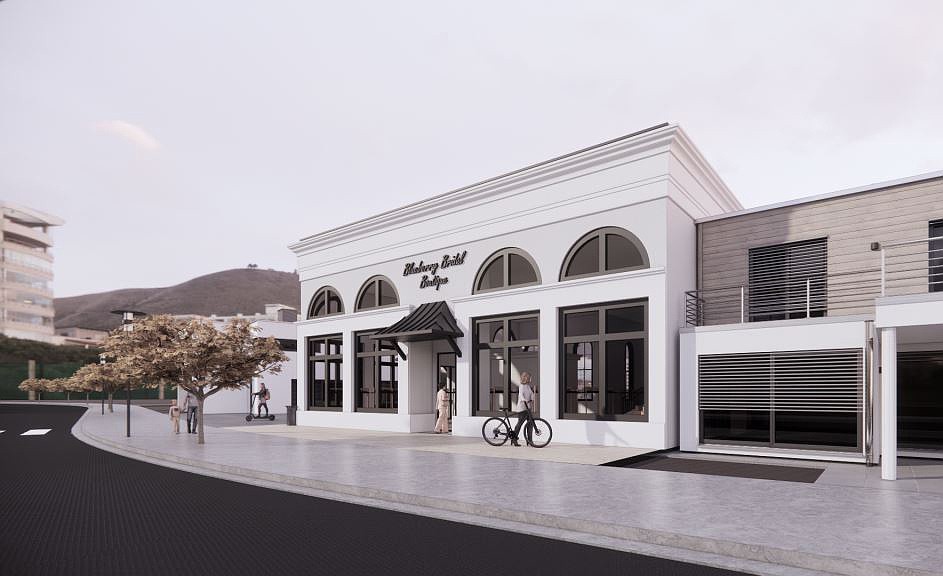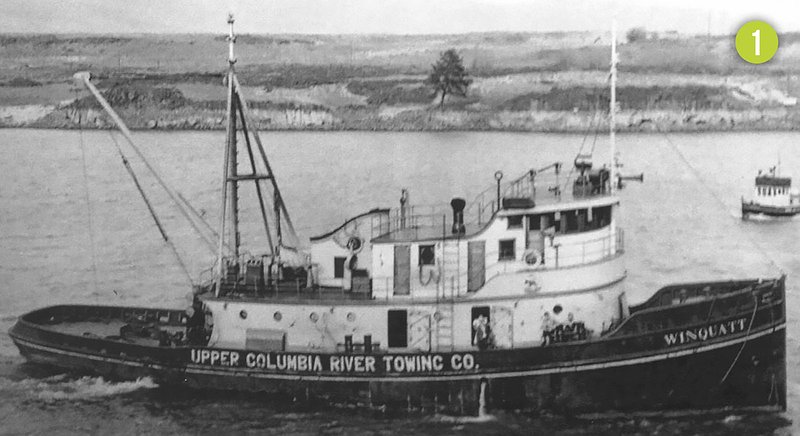Port of Kennewick celebrates 110
KENNEWICK — Tim Arntzen, CEO at the Port of Kennewick, said he’s excited for March 2025 when the port celebrates its 110th anniversary. He said the port he leads is not just an economic stimulator for Kennewick, but a place with a long heritage of innovation and community service.
“When we started, when this port started, it was meant to simply provide water access to Kennewick for the shipping of goods, so it stayed real close to the original mission of ports,” Arntzen said.
The port was founded March 6, 1915, according to its history website. At the time, 282 of the area’s 379 voters – it was a much smaller population back then – voted in favor of the formation of the port. The port allowed Kennewick and the surrounding area to leverage the then-recently-completed Celilo Falls Canal to access other canals and West Coast ports in and around Portland. By the summer of that same year, cargo and passengers were passing through the port’s docks.
Since then, the port has gotten community support for a variety of projects such as dredging the Columbia River to make it more navigable for boats; created industrial buildings to rent to tenants; established a variety of ways to access the water for both businesses and local residents; and, more recently, has set up business parks and recreational facilities to enhance quality of life for those living in Kennewick and the Tri-Cities.
Arntzen said the community improvement piece, which includes integrating beautification projects into the port’s facilities, is a more recent change that happened after he was promoted to CEO. He’d originally begun with the port as the
“We were doing some economic development,” he said. “We were copying what other ports did, and after I got the job of the CEO, I looked around and said, ‘There’s a lot of duplication.’”
The ports of Pasco and Benton are fairly close to the Port of Kennewick, all three being just northwest of where the Snake River flows into the Columbia. All three were doing work focused on more industrial economic development, and Arntzen said he felt there could be better use of port revenues by eliminating mirrored efforts. While Kennewick’s port does work on industrial economic development in its warehouses and other facilities, it’s branched out to look at how the port can add to residents’ quality of life.
Projects include the Columbia Gardens Wine & Artisan Village which was covered in the January edition of the Basin Business Journal.
Other projects include Vista Field, the port’s airport which was decommissioned in 2023 and is being prepared for other uses including places for small businesses, housing developments and commercial uses. Infrastructure has been installed and set for those sorts of facilities to fill the area, adding to the local economy through increased retail activity, added jobs and more local housing. The port has had similar success with the development of the Southridge area of Kennewick which includes a high school, restaurants, local shops, housing and the City of Kennewick Sports Complex and a hospital that serves the area.
According to Tana Bader Inglima, Port of Kennewick assistant CEO, about 40% of the plots included with the Vista Field project have been sold.
One thing Arntzen said he’s particularly proud of is the restoration, in partnership with the Confederated Tribes of the Umatilla Indian Reservation and the U.S. Army Corps of Engineers, of nearby shoreline. Arntzen said it was particularly rewarding because he was able to develop a strong relationship with tribal leaders, whom he’s come to respect and appreciate. Often, he said, Indigenous peoples are approached in the wrong way with officials trying to check off the box on a project related to tribal approvals. Instead, he said he knew he wanted something done, but he also wanted tribal input before he had a plan in place for anything.
With that in mind, he approached tribal leaders and got to know them as people, focusing on developing respectful, informed relationships rather than just ticking off a box. Once he knew how to approach them appropriately, he let the Umatilla leadership know that the port wanted to revitalize the shoreline around Clover Island, the small island the port’s offices are located on. He said he’d approached them because the tribe had ceded the land and thus had input in how things would be done.
“We just started talking to them over a cup of coffee, and then you can ask them for support, and they’ll tell you the things they want to see,” Arntzen said. “They were really big on restoring that shoreline, so we learned what was important from the tribes.”
The tribes were able to provide input on the project and the shoreline was restored in a way that not only keeps the port facilities safe but honors the heritage of the people who lived there before Kennewick was founded.
That relationship building has been worth it, both professionally and personally, he said.
“I forged a long-lasting friendship with their executive, who also later became a chief. That’s a very ceremonial thing and my family was there for that,” Arntzen said. “We’re good friends.”
External relationships are important, whether that’s with the tribes, the city or the Corps, he said. Internal relationships are just as important. A large part of the port’s recent successes come from having staff that are focused on doing good work and doing things right the first time, even if it means having a difficult conversation or two.
“You hire the best and the brightest, and you expect there will be those times they tell you, ‘No.’” Arntzen said.
Commissioners, community members and even Arntzen will sometimes have ideas that possibly aren’t in line with the port’s mission or what it can do within its authority. Arntzen said having staff that can educate him, the commissioners and the community about that sort of thing keeps the port from getting into muddy waters.
Walking that line can be challenging, he said. It’s about sticking to the main mission of the ports: economic development.
“There’s a lot of other things under that,” he said.
Looking at how there can be synergy between the port’s primary objective of economic development and improving quality of life is important, Arntzen said. That means that new projects should be high quality and any added benefit that can be wrapped into it should be, when feasible. Art at the parks, business plazas and other sites the port operates adds to the draw of the place, he said, and people who enjoy the environment are often return visitors. That repeat business helps local shops, brings in more sales tax for the city to use for a variety of purposes and improves quality of life for locals.
As the port moves into the start of its 111th year, Arntzen said he’s hoping to continue developing the local economy in a way that works for locals and preserves the port’s heritage. In particular, he’s interested in improving access to the river for both trade and recreation. That is, after all, where the port got its start.
“That’s the one thing we’ve been working on, is trying to continue the access to the water with our developments here, because you only have one waterfront,” he said.
 The Port of Kennewick teamed up with the city of Richland to create the Spaulding Business Park, a 30-acre industrial park that opened about 218,000 square feet of private sector buildings worth about $53 million in assessed value. The investment brought development of housing and nearly 500 local jobs to the area.
The Port of Kennewick teamed up with the city of Richland to create the Spaulding Business Park, a 30-acre industrial park that opened about 218,000 square feet of private sector buildings worth about $53 million in assessed value. The investment brought development of housing and nearly 500 local jobs to the area.Courtesy photo/Port of Kennewick
 Blueberry Bridal completed its purchase of land at Vista Field in the Port of Kennewick. The bridal shop will provide about 4,000 square feet of retail space focused on brides and grooms. Vista Field was once the port’s airport but was decommissioned about a dozen years ago and is being developed for other purposes.
Blueberry Bridal completed its purchase of land at Vista Field in the Port of Kennewick. The bridal shop will provide about 4,000 square feet of retail space focused on brides and grooms. Vista Field was once the port’s airport but was decommissioned about a dozen years ago and is being developed for other purposes.Courtesy photo/Port of Kennewick






